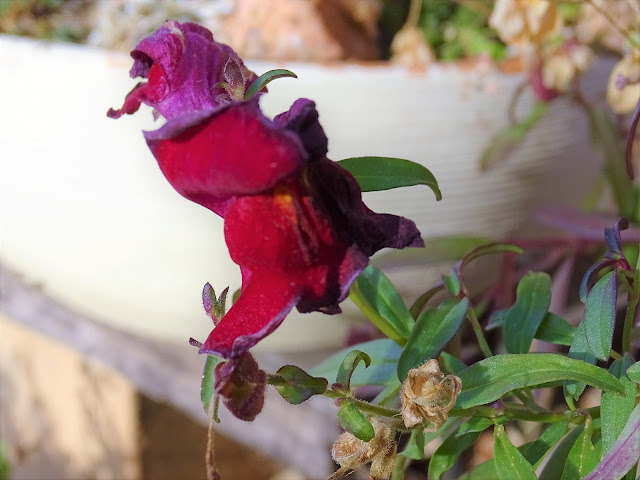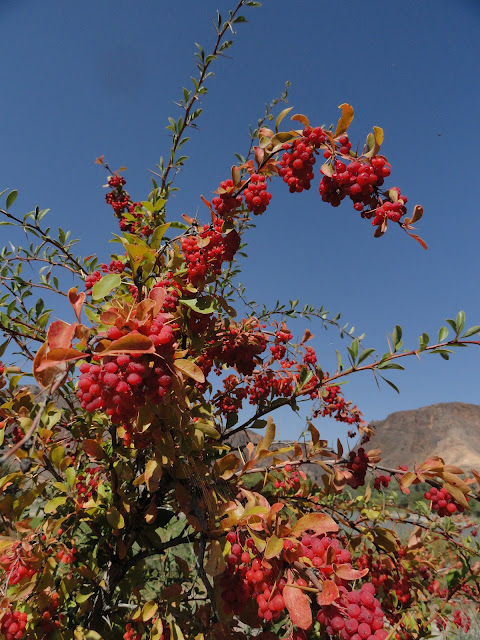 |
| Noxious weed in pride of place... |
[another "fossil post"--I started this several years ago and it's been quietly dormant in a working file...thought I'd resurrect it.]
This time of year garden blogs are splashed with bright colors of early flowers, as we pander to the lascivious need for sensuousness and human frailty. Screw that! Pandering takes many guises (just call me Panderyoti): who thought that a crass, weedy, nasty, spiny, common plant would be the cinderella of the garden? Truth be said--humans are highly discerning and do not need a mass of orange azaleas juxtaposed against magenta rhododendrons in order to notice color.
There are many thousands of dazzling alpines and wonderful plants in the Rock Alpine Garden, but for the many decades I worked there, the most questions and comments I received on any plant was about that reddish bush that you have doubtless noticed too...yes, Japanese barberry!
In person the fruits (blazing in the backlit light) grab visitors. I should have spent hours seeing if I could capture this same shock of berry-lit beauty--but this is all I had in my files. Truth is that barberries are almost always lovely--the green or purple or scarlet mounds of foliage depending on cultivar and season are pleasant enough--but the yellow mass of flowers in spring can be entrancing--and the scarlet berries are what enchant every passerby: I even saw "barberry jam" from Iran sold at "Arash" our local Persian grocery store [shoulda photographed it, come to think of it--and I should have bought the damn stuff too! Curious what it tastes like!]
I know, many barberries are reputed to be alternate host of the wheat stem rust pathogen, Puccinia graminis f. sp. tritici. I have also read that some pathologists dispute whether barberries are truly the host.
 |
| Berberis diehlsiana |
I have never done justice to Berberis diehlsiana in a picture: this one produces enormous, long clusters of bright berries. One of innumerable Asian barberries that make spiny glorious mounds in our garden.
We even have a native barberry along the Front Range--not the most stunning, perhaps, but with a certain amount of charm. Here in Jim and Dorothy Borland's terrific garden in west Denver.
 |
| Berberis iliensis |
One of the innumerable highlights of my last trip to Central Asia was finding this "rare" barberry growing in profusion. It made an impenetrable, spiny wall 15 or more feet tall.
The berries are so gorgeous against the blue sky and the foliage was just starting to color up in early September: something tells me this would be mind boggling in full autumn color!
Yet another view of them...
And what about evergreen barberries? There are so few broad leaf evergreens that can be grown without a great deal of cossetting in our harsh steppe climate--but several barberries oblige: the two most commonly encountered being
Berberis x mentorensis and
B. julianae.
Of course, the very best "barberries" for us in Colorado are the various blue foliaged Mahonias. I realize that many botanists have combined
Berberis and
Mahonia. That may well be what prevails--but for this blog, let's stick to the green leaved plants. There are species enough for both camps!





















































































